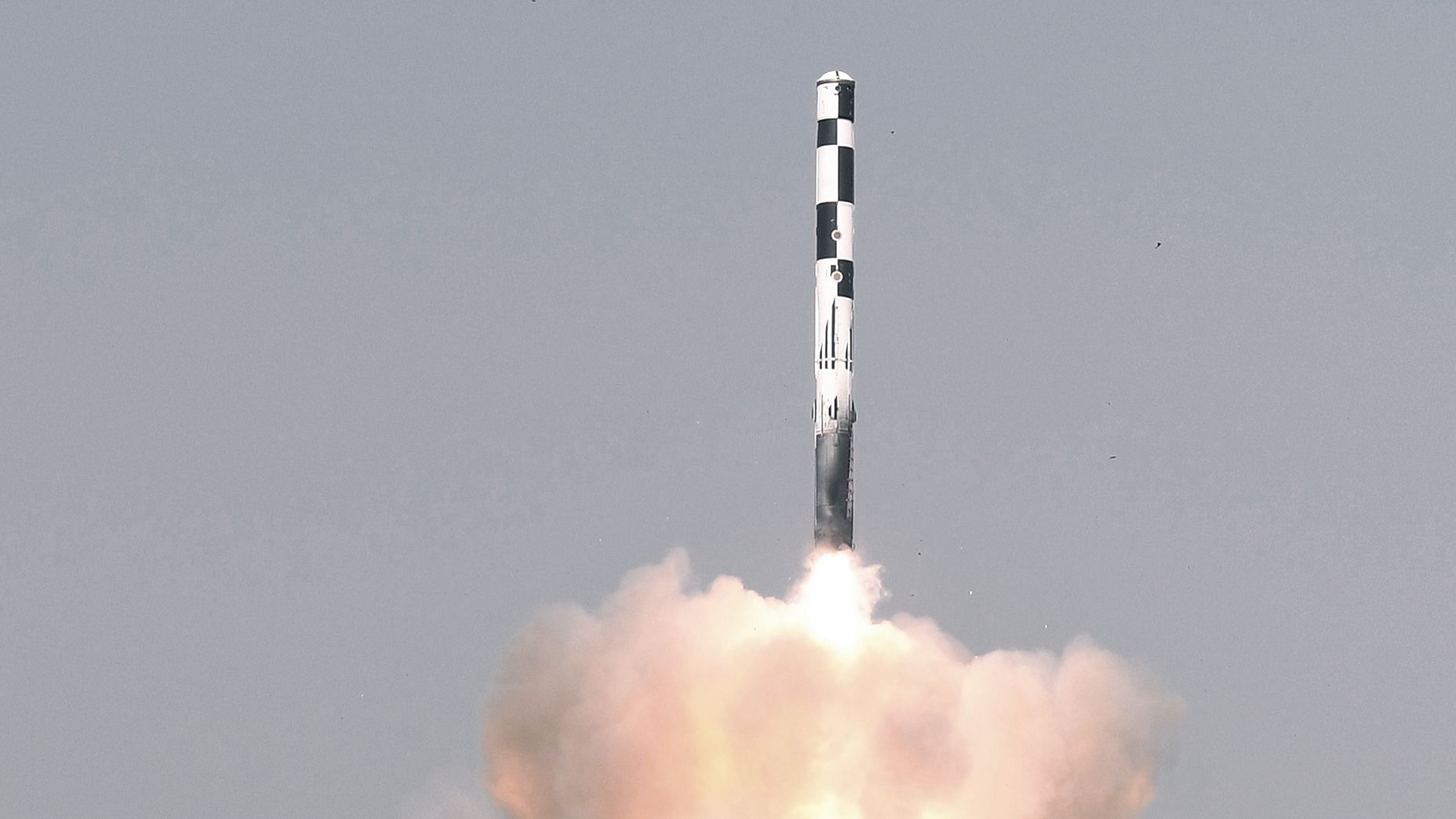Indian Missile in Pakistan: What Led to the ‘Accidental Firing’?
The fact remains that the world over, such strategic assets are handled by humans, who are often fallible.
Photo for representation.
(Photo credits: Wikimedia Commons)

On 10 March, Pakistan’s Director-General Inter-Services Public Relations (DG ISPR) alleged in a press conference that Pakistan’s Air Defence Operations Centre had on the evening of 9 March picked up a high-speed flying object that had been launched from near Sirsa (Haryana). The object initially seemed to be heading towards Mahajan Field Firing Ranges (MFFR), but after 70-80 kilometres, it suddenly turned towards Pakistan, flew at speeds up to Mach 3 and reached an altitude of 40,000 feet, travelled 124 km inside Pakistan and finally landed at Mian Channu, Khanewal district (northwest of Multan), damaging some civilian property. It also said that Pakistan had recovered the debris and was examining it.
On 11 March, Pakistan summoned India’s Charge d’Affaires and officially voiced “strong condemnation of this blatant violation of Pakistani airspace”, after which India admitted that on 9 March, it had accidentally fired a missile that landed in Pakistan and that it "deeply regretted" the incident. It added that the accident occurred due to a technical malfunction during a routine maintenance check and that the government had “taken a serious view and ordered a high-level Court of enquiry”.
Outlandish Theories on Social Media
From the tracking data (particularly the speed, altitude reached) released by Pakistan’s DG ISPR and the pictures available, it seems fairly certain that the object was not:
A ballistic missile, as Short-Range Ballistic Missiles or Tactical Ballistic Missile (range up to 300 kms) typically rise to an altitude of 80-100km before re-entry;
A Hypersonic Glide Vehicle, whose “booster” rocket, too, rises into near-space, with the glide vehicle descending at hypersonic speeds, ie, in excess of Mach 5)
India’s under-development ‘Hypersonic Technology Demonstrator Vehicle’/Mach-7 BrahMos-II. This is propelled to high speeds initially using a small rocket, and is then powered to the target by a supersonic-combustion-ram-jet (‘scramjet’) for hypersonic flight.
However, it seems, particularly from pictures, that it is India’s supersonic BrahMos cruise missile. Perhaps the latter was being updated with targeting data, or its systems were being tested for full-functionality, and it got fired inadvertently. The BrahMos utilises a combination of inertial navigation system (INS) and satellite-based global positioning system against land targets – and likely explains the initial track towards MFFR (used as a waypoint) and later towards Pakistan.
This dismisses one of the outlandish theories being floated on social media, that India had deliberately fired the missile to test Pakistan’s missile defence readiness – no responsible country will risk firing a modern, frontline missile without a warhead to test an adversary’s readiness and risk it falling into inimical hands.
Human Errors
While this incident shows India’s handling of its strategic weapons and launch protocols in poor light, the fact remains that the world over, such strategic assets are handled by humans, who are often as fallible as the next person. Consequently, the nuclear weapons history of the US, the UK and the erstwhile USSR or present-day Russia is replete with accidents.
The 2014 report of the Interagency Security Classification Appeals Panel (ISCAP), the US’s highest classification authority, shed additional light on the so-called Apollo/Nuclear Materials & Equipment Corporation affair, which dwelt on the possibility that in the 1960s, Israel stole over 100 kgs of weapons-grade uranium from a US nuclear fuel-processing plant.
At the CIA’s February 1976 briefing of a small group at the Nuclear Regulatory Commission, Carl Duckett, then-CIA deputy director for science & technology, had also told the NRC group that the CIA believed that the missing uranium ended up in Israel. In July 2012, three activists broke into the $548 million nuclear materials storage bunker at the Y-12 National Security Complex in Oak Ridge, US.
In 2013, a US Air Force unit that operates one-third of the nation’s land-based nuclear missiles failed the safety & security inspection.
A Fortunate Outcome
The above is an observation and not an excuse for the present incident. Given the long-running tensions between India and Pakistan, this inadvertent launch could have easily led to a rapid escalation to nuclear levels. In the case of US-Russia, the typical flight time of an inter-continental ballistic missile is about 25 minutes. Yet, in a “launch on attack” scenario, the President of the US, as per an August 2017 assessment by the Nuclear Threat Initiative, would have just 2 to 3 minutes to make a decision to respond to an attack by Russia.
The response times in the case of India-Pakistan, which are contiguous nations, is far less. The timings provided by Pakistan show that the Indian missile was airborne for about seven minutes before its impact near Mian Channu and could have easily been misconstrued as an Indian pre-emptive strike on a Pakistani strategic facility – Multan is one of Pakistan’s nuclear weapons sites – and prompted Pakistan to retaliate.
The overall outcome, therefore, is fortunate for both nations. The Indian acceptance of a mistake especially needs to be commended for maturity as it contributes to strategic stability in the sub-continent.
(Kuldip Singh is a retired Brigadier from the Indian Army. This is an opinion piece and the views expressed above are the author’s own. The Quint neither endorses nor is responsible for the same.)
(At The Quint, we are answerable only to our audience. Play an active role in shaping our journalism by becoming a member. Because the truth is worth it.)